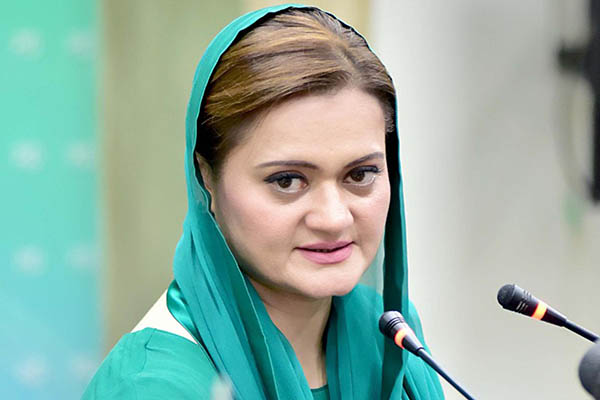
Information Minister Marriyum Aurangzeb. Photo courtesy PID
Information Minister Marriyum Aurangzeb on Wednesday defended a recent ban imposed by the Pakistan Electronic Media Regulatory Authority (PEMRA) prohibiting satellite TV channels from broadcasting terrorist attacks.
In February, PEMRA issued an order barring the live coverage or broadcast of explosions and terrorist attacks, stressing that journalists often ignored safety protocols and created hurdles for rescue and combat operations. “Moreover, information shared thereof on the news channels is unverified, speculative without consulting security agencies present on the spot,” it said, claiming such coverage created panic among local and foreign viewers.
“Reporting of such incidents gives advantages to terrorists for using media as forum of political advertising which serves terrorists’ ideological purposes by publicizing their campaign,” it said, adding it also served to give them an “organizational advantage” and projected a negative image of Pakistan. It directed channels to only provide viewers with information from official sources and warned of fines or revocation of licenses if they did not comply.
There has been growing criticism of this policy in recent weeks, as terrorist strikes increase nationwide and journalists complain of having their hands tied in covering them. Earlier this week, attacks in Balochistan prompted a wave of show-cause notices for channels from PEMRA, triggering a new round of condemnation for the assault on freedom of expression and media independence.
In a bid to defend PEMRA’s directives, the information minister acknowledged the concerns on “ethics of violent scenes involving acts of terrorism and their aftermath,” claiming the order prohibited broadcasting gory scenes, dead bodies, wreckage and live images from the spot only to avoid spreading fear and panic among the masses, “which is always the real aim and design of the terrorists.”
Maintaining that similar boundaries existed globally, she said “responsible” media bodies and organizations adhered to them across the board. “Live coverage of terrorism incident spots amplifies terrorism impact and divulges sensitive post operation information to miscreants,” she said, stressing the government believed in free speech as a “sacred cause” and had fought attempts to curtail this right in the past.
“We are committed to this principle. But enforcement of ethics of coverage involving acts of terrorism is a global code. It is part of the national law. It is what we owe to the people who are victims of terrorism. It is what responsible journalism is,” she added.
